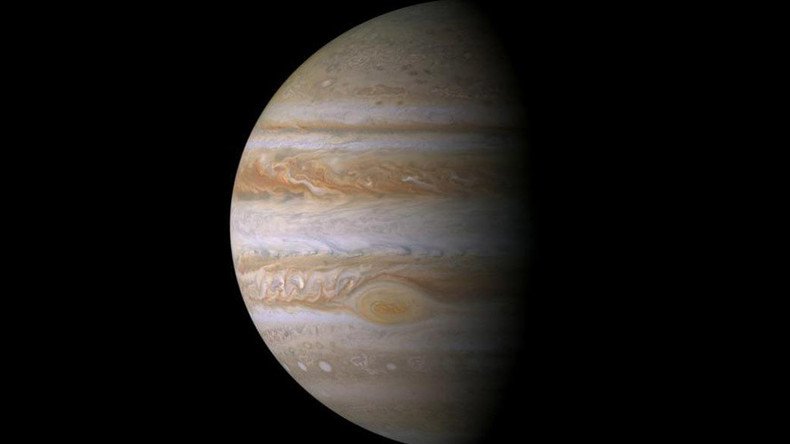Asteroid smashing into Jupiter filmed by amateur astronomers (VIDEO)

Two amateur astronomers have captured Jupiter taking another beating from what appears to be a comet or asteroid.
The impact, which took place on March 17, was filmed by John McKeon and Gerrit Kernbauer from Ireland and Austria respectively, who both happened to be filming Jupiter with their telescopes (28cm for McKeon and 20cm for Kernbauer, FYI).
Keep your eyes trained on the right-hand side of the planet to see the explosion.
“The original purpose of the imaging session was to get this time-lapse, with a happy coincidence of the impact in the second last capture of the night,” wrote McKeon in his YouTube video’s description.
“Given how brief the flash was, and how bright, I’m sure it wasn’t terribly big, probably in the tens-of-meters wide range,” wrote astronomer Phil Plait for Slate.com.
READ MORE: Huge comets may pose ‘inevitable’ danger to Earth – astronomers
While that might not seem big enough to create a crash that can be seen from Earth, Plait explains that Jupiter’s “ferocious gravity” means an object hits the planet with 25 times the impact energy than it would on Earth.
Meanwhile, the Austrian amateur astronomer said he was initially reluctant to check through his recordings of the ringed planet.
"The seeing was not the best, so I hesitated to process the videos," wrote Kernbauer in his video description.
"Nevertheless, 10 days later I looked through the videos and I found this strange light spot that appeared for less than one second on the edge of the planetary disc. Thinking back to Shoemaker-Levy 9, my only explanation for this is an asteroid or comet that enters Jupiter's high atmosphere and burned up/explode very fast,” he added.
Jupiter is an amazing 591 million kilometers away (370 million miles) when at its closest to our planet, and yet the flash of light from this cosmic impact could be seen by telescope from Earth.
Asteroid impacts can be incredibly high-energy. Plait points out that the asteroid that exploded over Russia in 2013 had the energy of 500,000 tons of TNT - a similar explosion on Jupiter would be 25 times that, given the gravity difference between the two planets.
READ MORE: World’s first double meteor impact found in Sweden
It’s certainly not the first time Jupiter has been dealt a stunning blow by the movements of our universe.
The most famous impact to Jupiter was recorded in 2009, when the planet was scarred with a permanent black dent some 190 million sq km wide from an object estimated to have been about 200 to 500 meters in diameter.












